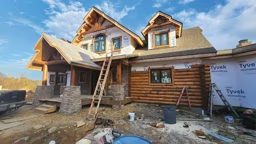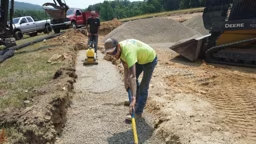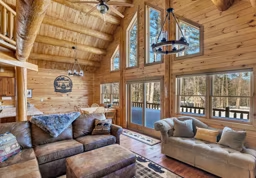
The logs intersect at the corners but rest securely on one another the entire length of the wall. There are three basic ways to design full-length support systems:
1. Flat-on-flat horizontal interface surfaces are perhaps the simplest. They usually use a butt-and-pass corner design, dry or well-seasoned wood that isn’t prone to twist or warp, a good sealant and a nailing schedule. The logs provide a broad base for support, but there’s no second line of defense should the logs twist or warp and the sealant fail.
2. Swedish cope is a concave-over-round design where the top of the lower log is left naturally round or milled round, and the bottom surface is cut away to a concave or crescent shape. The two outside edges of the concave surface rest on the round top of the lower log, providing two sealing points and a wide support base.
3. Tongue-and-groove surfaces require precision milling machinery, which cut lengthwise into the horizontal surface to form a single, double or triple tongue-and-groove configuration. The tongues are generally on the top where they won’t catch and retain water, and the grooves are milled into the bottom. When the logs are stacked, the tongues and grooves fit together to create a tight seal, and the inside and outside edges of the surfaces provide a wide base for structural stability.
See also Log Home Additions: How to Add On











